Our Company
History
|Katharine Graham
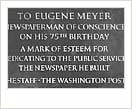 1950
1950
To accommodate the growing newspaper, Graham built a new $6 million plant for The Washington Post at 1515 L Street, N.W., installing up-to-date presses and other new equipment.
In June, Graham purchased Washington's CBS television station and changed the call letters to WTOP-TV.
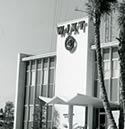 1953
1953
The Washington Post Company purchased television station WMBR in Jacksonville, FL, and in 1958 changed the call letters to WJXT-TV.
1954
The Washington Post Company purchased its last morning rival in the city, the Washington Times-Herald. Circulation of The Washington Post and Times-Herald jumped almost overnight to 380,000. The purchase of the Washington Times-Herald guaranteed The Post's survival and business success.
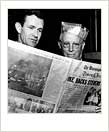 1959
1959
Eugene Meyer died on July 17.
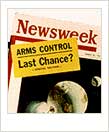 1961
1961
Philip Graham purchased Newsweek magazine for The Washington Post Company.
1962
The Los Angeles Times-Washington Post News Service was formed to syndicate columns, articles and features appearing in both newspapers. Today it is one of the largest supplemental news services in the world.
1963
Katharine Graham became president of The Washington Post Company following the death of her husband, Philip Graham.
The Washington Post Company bought 49 percent of the common stock of Bowater Mersey Paper Company in Nova Scotia, Canada.
1966
In September, The Washington Post purchased an 85 percent interest in Robinson Terminal Warehouse in Alexandria, VA. The warehouse is used as a storage facility for newsprint for The Washington Post and other publications in the area.
The Washington Post Company bought an interest in the New York Herald Tribune's Paris edition from Whitney Communications. The following year, The Washington Post Company, The New York Times Company and Whitney launched the International Herald Tribune. The Washington Post Company sold its 50 percent interest to The New York Times Company in 2003.
1969
The Washington Post Company purchased the ABC-affiliated television station in Miami, FL, and changed the call letters to WPLG-TV in memory of Philip L. Graham.
1971
On June 15, The Washington Post Company went public with the sale of Class B common stock to the general public for $26 per share. Until then The Post Company had been privately held. Its stock is listed on the New York Stock Exchange with the symbol WPO. Class A shares are privately held by the Graham family.
On June 18, The Post begins publishing excerpts of the Pentagon Papers. On June 30, the U.S. Supreme Court upholds the right of The Post and other newspapers to publish the Pentagon Papers.
The company donated radio station WTOP-FM to Howard University "to stimulate the intellectual and cultural life of the whole community and to train more people for the communications industry." On December 6, with the new call letters WHUR-FM, the station became the first under black management to broadcast in the Washington metropolitan area.
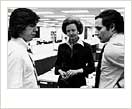 1972
1972
On June 16, The Post begins reporting on a break-in at the Democratic National Committee headquarters at the Watergate. The story and the resulting scandal eventually lead to the resignation of President Richard Nixon.
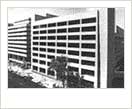 In October, The Post dedicated its new $25 million building at 1150 15th Street, N.W.
In October, The Post dedicated its new $25 million building at 1150 15th Street, N.W.
1973
Katharine Graham was elected chairman of the board and chief executive officer of The Washington Post Company while continuing as publisher of The Washington Post newspaper.
In September, The Post formed The Washington Post Writers Group now called WP Licensing & Syndication which syndicates writers and cartoonists. It also sells reprints of Washington Post articles and photos.
1974
In March, The Washington Post Company purchased WFSB-TV in Hartford, CT.


